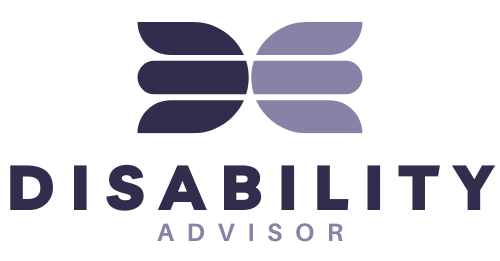After receiving approval for Supplemental Security Income (SSI), many beneficiaries are eager to know when they will receive their back pay.
Back pay includes the benefits you’re owed from the time you became eligible for SSI until the time your claim was approved.
While the approval process can be lengthy, understanding how long it takes to receive back pay and what factors may impact the timeline can help you manage your expectations and financial planning.
Let us talk about how much time we need to wait before back pay.
An Interview is Required Before SSI Payment
After you receive approval for disability SSI benefits—whether through your initial application or as a result of an appeal, there is one more important step before payments begin.
The Social Security Administration (SSA) requires an interview to confirm your current eligibility status and determine the correct payment amount.

What to Expect During the Interview
Your local Social Security office will contact you to schedule the interview. This is typically conducted over the phone, but in some cases, it may be done in person.
During the interview, the SSA will review any changes in your income, resources, living arrangements, or other eligibility factors that may have occurred since you initially filed your claim.
It is important because SSI benefits are based on your financial situation, and changes could impact how much you’re eligible to receive.
Documentation Requirements
The SSA will ask for supporting documentation to verify your current circumstances. This may include bank statements, pay stubs, rent receipts, or other documents related to your finances and living situation.
The purpose of gathering this information is to ensure they accurately calculate both your monthly benefit and the amount of back pay you’re entitled to.
Issuing Retroactive Payments
Once the SSA has all the necessary information, they will calculate your payments for each month, starting from the month after you applied for SSI through the current month.
You will receive a retroactive payment, or back pay, which covers all the months during which you were eligible but had not yet received benefits.
The payment is often issued in a lump sum, though in some cases, back pay may be distributed in installments depending on the amount and your individual circumstances.
Paying Back Public Assistance

If you received interim cash assistance from a state while waiting for your SSI claim to be processed, the Social Security Administration (SSA) is required to use a portion of your back pay to reimburse the state.
This interim assistance is typically provided by states to individuals in financial need while their SSI application is under review.
Once your SSI benefits are approved, the SSA automatically deducts the amount you received from the state assistance from your retroactive back pay and sends it directly to the state.
Only after the state has been reimbursed will you receive the remaining balance of your back pay.
Windfall Offset
The windfall offset applies when a person is eligible for both SSDI and SSI back pay for the same months.
The rule is designed to prevent a “windfall” by ensuring that you do not receive more money than you would have received if both SSI and SSDI payments had been made on time.
The full amount of your SSI back pay is released to you first. To avoid overpayment, your Social Security Disability benefit will be reduced by the offset amount, which is the amount your SSI would have been reduced had SSDI been paid when due.
In rare cases where your SSDI back pay is issued first without an adjustment for the windfall offset, the SSA will withhold the offset amount from your SSI back pay instead.
If the windfall offset makes you ineligible for SSI during some months, the SSA will still pay you $1 in SSI benefits for those months.
This seemingly small amount is important because it helps preserve your retroactive Medicaid eligibility, which can be a crucial benefit for many recipients.
Installment SSI Payments
If your SSI back pay is a large amount, the SSA may distribute it to you in installments rather than a single lump sum.
These installments are usually spread out over three payments made six months apart.
The SSA does this to help recipients manage their benefits more effectively and prevent misuse of large sums of money.
- If you have a medical condition that is expected to result in death within twelve months, you will receive your full back pay in a single lump sum rather than installments.
- If you are no longer eligible for SSI and are expected to remain ineligible for at least twelve months, the SSA will also release your full back pay in a lump sum.
The SSA allows for increased payments in the first and second installments if the additional money will be used to pay off past-due debts related to basic living expenses, such as housing, food, or medical care.
The exception is intended to help recipients address urgent financial needs that may have accumulated while waiting for their SSI benefits.
Ongoing SSI Payment Dates

SSI payments are typically issued on the first day of each month. However, if the first of the month falls on a weekend or a federal holiday, the payment will be released earlier.
In such cases, your SSI payment will be available on the last business day before the weekend or holiday.
For example, if the first of the month falls on a Sunday, you would receive your payment on the preceding Friday. This system helps ensure that there are no delays in accessing your benefits.
Payment Delivery Choices
While some SSI recipients still receive their monthly payments via a paper check, this option is being phased out. Starting in March 2013, the U.S. government has required that all SSI payments be made electronically.
The shift to electronic payments offers a more secure and efficient way to deliver benefits, reducing the risk of lost or stolen checks and ensuring faster access to funds.

There are three electronic payment options available to SSI recipients:
Direct Deposit
- Bank
- Credit union
- Brokerage firm
Direct deposit is a fast, reliable, and secure way to receive your benefits. It ensures that your payment is available on the due date, with no need to worry about delays caused by mail delivery or lost checks.
Direct Express Debit Card
For individuals who do not have a bank account or prefer not to use one, the government offers the Direct Express® Debit MasterCard®. With this option, your SSI payment is loaded onto a prepaid debit card each month.
You can use this card to withdraw cash from ATMs, make purchases, or pay bills, just like you would with any debit card. There are no sign-up fees, and it provides a convenient alternative for those without access to traditional banking services.
Electronic Transfer Accounts (ETAs)
The third option is an Electronic Transfer Account (ETA), which is a low-cost, federally insured account specifically designed for people who receive federal benefits. This account option allows you to access your SSI payments through basic banking services, usually at a low monthly fee.
ETAs are available at participating financial institutions, and they offer easy access to your funds with features such as debit card use and cash withdrawals.
Transition to Electronic Payments

The move to electronic payments was introduced to modernize the system and enhance the security and reliability of SSI payments.
Recipients who were previously receiving paper checks were required to switch to one of the three electronic payment methods by March 2013.
The SSA continues to encourage all beneficiaries to choose direct deposit for its convenience and ease of use.
However, for those who may face challenges in setting up a bank account, the Direct Express card and ETA options remain viable alternatives.







